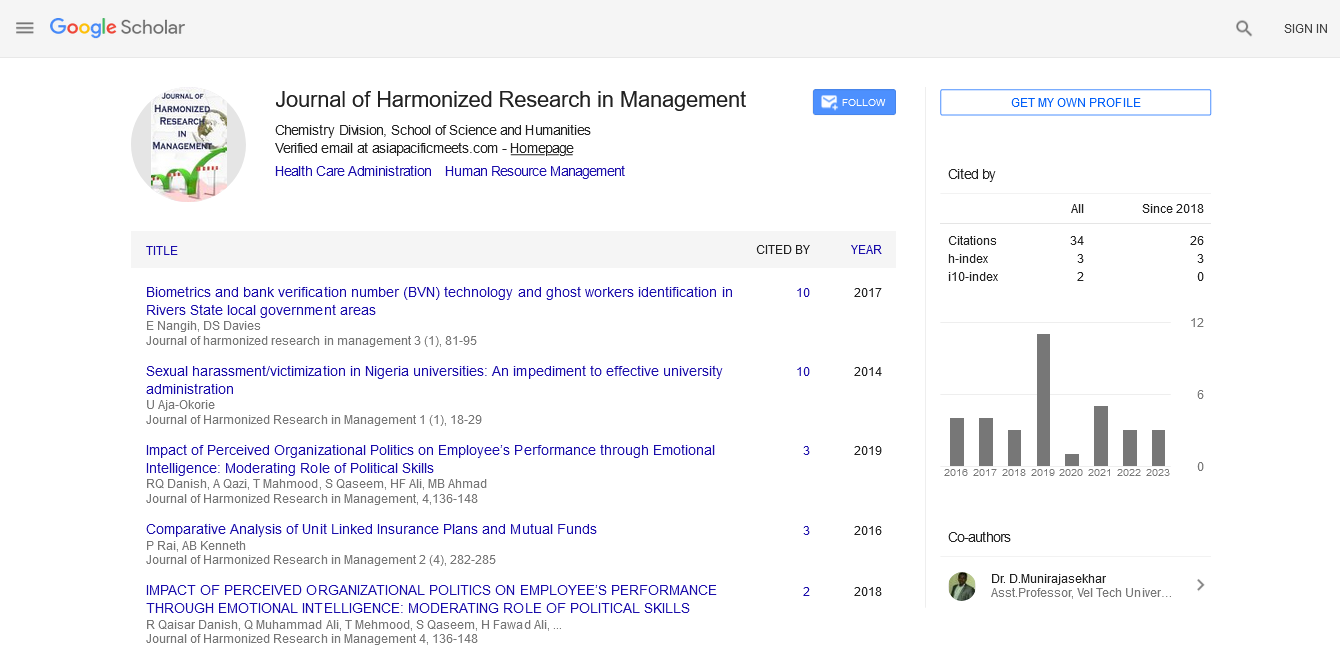Perspective - (2022) Volume 8, Issue 1
MANAGING COMMUNITY ENGAGEMENT IN AIDS IOMEDICA RESEARCH
Ming Chung*Received: Mar 01, 2022, Manuscript No. JHRM-22-62982 ; Editor assigned: Mar 07, 2022, Pre QC No. JHRM-22-62982 (PQ); Reviewed: Mar 21, 2022, QC No. JHRM-22-62982 ; Revised: Mar 28, 2022, Manuscript No. JHRM-22-62982 (R); Published: Apr 07, 2022, DOI: 10.30876/ 2454-5384.22.11.127
Description
There is wide consensus on the value of Community Engagement (CE) in research. According to these views, CE is valuable for both intrinsic and instrumental reasons ensuring respect for communities ethical and cultural norms and values, ensuring that research addresses the needs and priorities of communities, ensuring ease of recruitment and retention of study participants, and increasing chances of uptake of research results by the concerned communities, among others. In Uganda, while the idea of CE dates at least as far back as the early 1990s, it is in about the last decade that this idea has gained more attraction mostly in HIV/AIDS research [1]. Currently the Uganda National Council for Science and Technology (UNCST) is finalizing guidelines that will make CE a requirement in all research involving human participants where procedures and results could affect communities interests and the environment. These guidelines require researchers to develop CE plans which will be subject to review by Research Ethics Committees (RECs) as part of usual research protocol review. Further, researchers will be required to monitor and evaluate the success and methods of their CE processes. In order to facilitate rigorous processes of CE in research, this study aimed at building on existing knowledge and experiences in CE in Uganda to develop context-specific guidance for planning, reviewing and evaluating CE in research [2].
Generally, both at international and national levels, there has been strong encouragement for CE in community- based research (and arguably all research that has potential to affect communities’ interests), and guidance has been provided to that effect. Recently, however, CE has been indicated as necessary for all health research [3], with a number of suggestions on how this process can be undertaken [4]. Yet in addition to local and international guidance and lessons from experiences in other contexts, to be locally sensitive in Uganda, such guidance would need to be partly based on a wealth of experience gained over many years of CE practice in research in that location. This study sought the experiences and views related to CE of Principal Investigators (PI), Community Advisory Board (CAB) members in HIV/AIDS biomedical research, and Research Ethics Committee (REC) members of the leading HIV research institution in Uganda – the Uganda Virus Research Institute (UVRI). Our findings suggested that for anyone to be able to plan and implement successful CE, there is need to be clear about what they want to achieve (goals), for example building and maintaining community trust, or ensuring sufficient recruitment and retention of study participants, what needs to be done in order to achieve that goal, for example, explaining the value and goal of the proposed study, and, later the forums, or broadly speaking, the mechanism that will be used to ensure that such information is accessed and understood by the community. This latter could, for example, be done through communicating such information at religious and other social events in the community; through mass media, channelling such information through and, or with local influencers among others. Hence, while reviewing CE plans, reviewers may not need to insist that researchers distinguish between methods, strategies and approaches. Rather, for pragmatic reasons, focus ought to be on what the target goals of CE are, what activities will be undertaken to achieve them, how those activities will be undertaken, and finally, whether there is a clear plan for evaluating the success of the whole process of CE [5].
This study describes the views and insights about how and why CE is implemented in HIV/AIDS biomedical research in Uganda, as well as infers from these practices what may work best in CE in research generally.
References
- Holzer JK, Ellis L, Merritt MW. Why we need community engagement in medical research. J Investigative Med. 2014;62(6):851–855.
[Crossref] [Google Scholar] [Pubmed]
- Musesengwa R, Chimbari MJ, Mukaratirwa S. Initiating community engagement in an ecohealth research project in Southern Africa. Infect Dis Pov. 2017;6(1):22.
[Crossref] [Google Scholar] [Pubmed]
- Pellicano E, Dinsmore A, Charman T. Views on researcher-community engagement in autism research in the United Kingdom: Mixed-methods study. PLoS One. 2014;9(10):109946.
[Crossref] [Google Scholar] [Pubmed]
- Lwin KM, Cheah PY, Cheah PK, White NJ, Day NP, Nosten F, et al. Motivations and perceptions of community advisory boards in the ethics of medical research: The case of the Thai-Myanmar border. BMC Medical ethics. 2014;15(1):12.
[Crossref] [Google Scholar] [Pubmed]
- Hood NE, Brewer T, Jackson R, Wewers ME. Survey of community engagement in NIH-funded research. Clin Trans Sci. 2010;3(1):19-22.
[Crossref] [Google Scholar] [Pubmed]

Google Scholar citation report
Citations : 92
Journal of Harmonized Research in Management received 92 citations as per google scholar report









